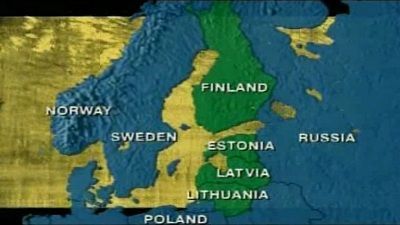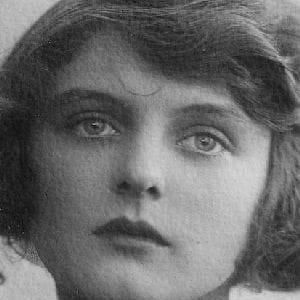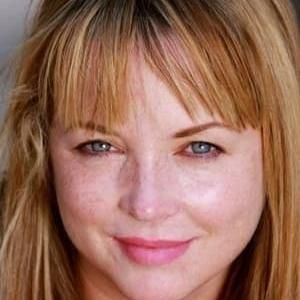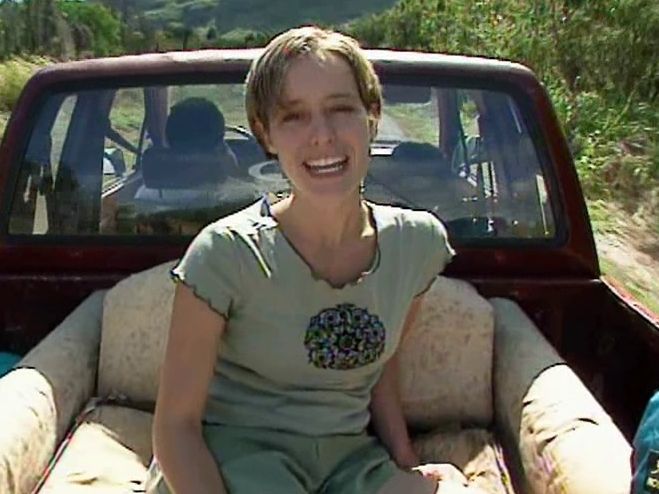

Where to Watch Season 5
13 Episodes
- HawaiiE1
HawaiiTraveller Megan McCormick begins her journey in the island paradise of Hawaii on Kauai, the least explored of the islands. She is invited to a Hula ceremony and learns that dancing was how the natives expressed their history and culture in the days before the Hawaiian language evolved. The main staple of the Hawaiian diet is a vegetable called taro. Megan lends a hand with the harvest, and is invited to taste the fruit of her labours at a Luau the following evening. Meanwhile, she kayaks down the Wailua River into the rainforest and treks into the forest to an isolated spot where she takes a refreshing dip in a waterfall. From Kauai, Megan flies to Oahu, the most populated of the islands. At the tourist haven of Waikiki she heads for the beach and takes a surfing lesson, learning how to feel the manna and ride the waves. The next morning Megan goes to the Honalulu fish market to find out how to tell the quality and shelf-life of a fresh catch. Although Hawaii has been an American state since 1959, the Japanese community makes up a quarter of the population and Megan learns that today there's a growing sovereignty movement among native Hawaiians. She attends a ceremony in remembrance of the attack upon the US marine base by Japanese bombers on December 7th 1941, when more that 2500 people were killed and the course of the Second World War was irrevocably altered. Megan hitches a ride with a bunch of young marines who are heading for the North Shore to check out the surf. Further along the north shore, Megan is invited to an intimate marriage ceremony. Same sex marriages are commonplace in Hawaii, although a recent referendum asking Hawaiians to vote in favour of same-sex marriages was lost by a narrow margin. Nevertheless, David and Scott make a great couple. Megan flies to Maui and, as hitch hiking is illegal on this island, she hires a car. She takes the Hana Highway all the way to the Haleakala Crater, the largest inactive volcano on earth and camps - West IndiaE2
West IndiaMegan McCormick's journey in one of the ultimate travellers' destinations, West India, begins in the small holy town of Pushkar. Along with hundreds of thousands of visitors, she takes part in the annual religious festival and receives a blessing on the shores of the lake. The town is also famous for its camel fair every November and Megan drives a hard bargain with the traders. After a gruelling 8 hour bus ride north to Bikaner, a remote desert city, Megan puts on a brave face and visits the extraordinary Karnimassar Temple. The temple is filled with rats, which are worshiped as the reincarnations of story tellers. In a small village just outside the city she bears witness to fire-dancing at the Sidh sect festival. The golden city of Jaisalmer, which was built in the 12th century, is at the very heart of Rajasthan. Megan, with her hands freshly adorned with henna, wanders through the market streets and samples Bhang Lassi, the infamous local speciality, at the Jaisalmer Fort. Megan makes the most of the renowned tailors in Udaipur, 'The Venice of the East', and has a traditional Punjabi suit made in just a few hours. Meanwhile a famous astrologer tells Megan what the next few years have in store for her. Megan makes a brief stop at Ranakpur, the site of one of the oldest and most impressive Jain temples in India, before heading 400 miles south by plane to Mumbai, formerly Bombay - the biggest, fastest and richest city in India. Startled by the number of street children in Mumbai, Megan pays a visit to a children's hostel and learns that travellers can volunteer to teach English at the hostel while in Mumbai. Whilst in Mumbai, Megan goes to Bollywood, where 750 feature films are made every year, and meets popular actor Jackie Shroff. Before leaving town Megan samples local cuisine at Juhu Beach, Mumbai's answer to New York's Coney Island. Some people come to India just to visit Pune, the home of the Osho community. Megan takes instruction in the co - New Zealand
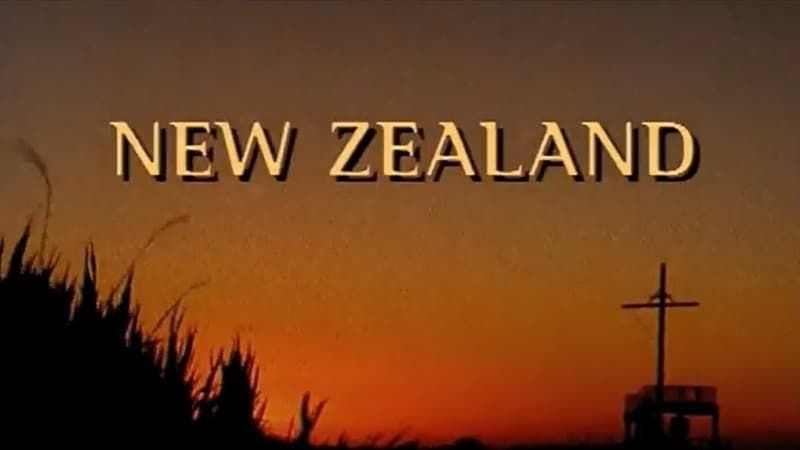 E3
E3New ZealandNew Zealand is a beautiful land of contrasts. The North Island is flat, green and densely populated, while the South Island is rugged, mountainous and snowy. The Maori originally called it Etirea, the land of the long white cloud. Globe Trekker traveler Ian Wright starts his journey in Auckland, where the city skyscrapers are home to the most extreme sports in the world. He then heads up the coast to Matauri Bay and the Bay of the Islands. On the South Island he visits Wellington, Christchurch and Queenstown, before climbing the amazing Fox Glacier. Along the way... Wreck dive the Rainbow Warrior. Attend a Pofari ceremony in a Maori community. Go punting in Christchurch. Sample a piece of Kiwi madness and do a bit of Zorbing. - Sydney City GuideE5
Sydney City GuideTraveller Justine Shapiro spends a week in Sydney, the gateway to Australia. On the eastern Pacific coast in the state of New South Wales, Sydney was the first port of call for the convict ships of the 1800s, carrying their cargo of outcasts from British cities to the penal colonies. The best way to get your bearings in Sydney is to take a ferry tour around the harbour. Justine buys a weekly travel ticket, then finds a cheap hostel to rest her weary backpack in the King's Cross district. On a mission to overcome her fear of heights Justine gets up early to scale Sydney Harbour Bridge. The climb can only be done with an organised group, so in spite of her vertigo Justine is in safe hands and the panoramic harbour view is definitely worth it. Back on terra firma Justine sets off to explore of Sydney's history at The Rocks, an early settlement, and at the Colonial House Museum. Bondi Beach, the most famous beach in the world, is the place to flaunt the body beautiful or just check out the lifeguards. Bondi is also the starting point for the coastal walk, a scenic cliff top promenade which many Sydney-siders incorporate into their fitness regime. En route to the Waverley Cemetery, which is surrounded by stunning coastal vistas, there's the less populated Tamarama Beach and Bronte Beach, more popular with the locals but no less spectacular. For all its European heritage Australia's closest neighbours are Asian countries. The Sydney suburb Cabramatta is populated by a vast Vietnamese community. Also of non-European descent are the Aboriginal peoples, who, although they lived on the land for 64,000 years before the arrival of the first convict ships, have only been counted as citizens since the referendum of 1967. Justine joins a tour which takes in cultural aspects of aboriginal life and gives an insight into the way the Aborigines have been brutally treated by the European colonisers. Justine ventures outside the city limits to Katoomba, gateway to the B - West Africa: Ghana and the Ivory CoastE6
West Africa: Ghana and the Ivory CoastMegan McCormick journeys to West Africa, where 500 years ago Europeans uncovered bounties of gold in Ghana (formerly the Gold Coast) and ivory in the Cote d'Ivoire. Her trip begins in Accra, the capital of Ghana. Here Megan visits an intriguing coffin shop and is invited to attend a funeral. For the Ga people it's traditional to be buried in a coffin which symbolises what you did in life. - Rio De Janeiro City GuideE11
Rio De Janeiro City GuidePresenter Ian Wright travels the south-east coast of Brazil, where exports in sugar cane, gold and coffee once made Rio de Janeiro one of the greatest cities of the colonial era. Nowadays the capital city of Brazil and the carnival capital of the world is most renowned as the home of samba & soccer. After checking into a cheap hotel, Ian checks out the beach at Copacabana. After a white-knuckle bus ride to the overcrowded half-mile strip of seashore where the locals cariocas hang out, he's quick to find instruction in beach etiquette from two seasoned beach regulars. From the Centro district of the city Ian takes the only remaining tram in Rio to the wealthy district of Santa Tereza. Since 1971 this area has been called home by notorious ex-train robber Ronnie Biggs. He was sentenced to 30 years for his part in the Great Train Robbery of 1963 but escaped from his British jail and went on the run. He's still a wanted man in Britain but he's enjoying his twilight years in Rio running barbecues for carnival-goers and telling his life story to tourists. A tourist train takes Ian to the top of Corcovado, the 2,200 foot mountain at the top of which is the massive statue of Christ the Redeemer is the most enduring picture-postcard image of Rio as it towers over the entire city. He then takes in the Taguca National Park, a seventy square-mile tropical rainforest right in the centre of the city. The Peak at Pedra Bonita is a natural wonder, and for the best aerial views of Rio, Ian goes hang-gliding over the city vistas. The favellas of Rio are well off the usual tourist trail and many visitors don't venture into these shanty towns to find out how a third of the population lives. Ian is shown around this city-within-a-city by tour organiser Marcelo Armstrong. A short trip across the bay is the Museum of Contemporary Art at Niteroi. It's Rio's most modernist building and architect Oscar Niemeyer based his design on a champagne glass. He doesn't stop to admire - Arctic CanadaE13
Arctic CanadaIan Wright travels as far north as he's ever likely to get - to Arctic Canada, the Land Of The Midnight Sun. He begins his trip in Montreal, the heart of the Quebec and the world's largest French speaking city after Paris. After sampling gourmet delights in town he heads out to a 'sugar shack' where, when the sap rises in March, Canada's renowned maple syrup is made. He learns all about the process of tapping the sap from the trees and boiling it down, and at the end of the day tastes the fruit of his labours. From Montreal Ian takes a trip to the Madeline Islands. The region used to be a hunting ground for the seal pups which are born on the ice fields each March but these days the only trade the pups are mixed up in is tourism. Ian is accompanied by an expert on seals and it's an incredible experience. Ian is warned about the wintry weather in Yellowknife, nevertheless he's intent on journeying to the Northwest territories, known as the Great White North. The capital, on the Great Slave Lake, was built just 50 years ago by pioneers looking for gold. He's there at the time of the Caribou Carnival, an annual festival originally held to welcome the spring. It's a whacky event where anything goes, from computer-bashing to ugly dog & truck competitions. In the evening Ian joins a Japanese group heading out of town to see the spectacular aurora borealis, the northern lights. This unbelievable sight which occurs when the earth's magnetic field generates electric energy by inter-reacting with solar winds. Even further north is Baffin Island in the territory of Nunavut. It's the only territory in history that has been peacefully handed over to its native people. In Iqaluit, the capital of the province, he hears the ancient Inuit tradition of throat singing and shares tales of abating frostbite in temperatures that can reach as low as -89°F. It's a four day dogsled trek from Iqaluit to Kimmirut across a plateau called Meta Incognita, 'the dreaded unknown'. L
